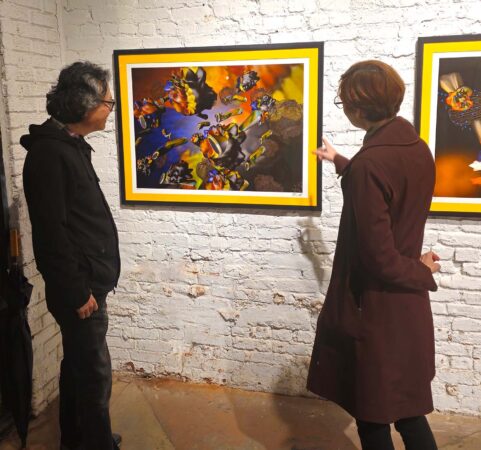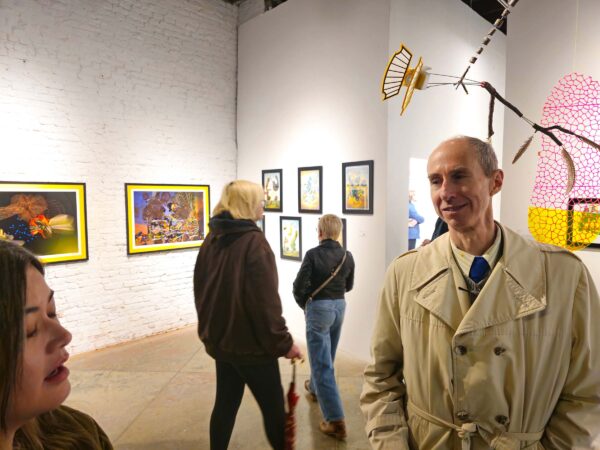In August of 2023 a breakthrough offers a glimpse into a future where tiny machines are capable of illuminating the hidden dialogues that underpin living beings. The study reveals an orchestra of molecular machines—spanning from the humble yeast to complex humans communicating ceaselessly through chemical signals. This coordination of molecules forms a high-level system, enabling us to move, think, heal, and reproduce.
In essence, life thrives on a web of molecular conversations, which have coevolved over billions of years. “The emergence of life hinges on the development of these molecular and chemical languages—unique signaling codes that allow molecules within a living organism to coordinate harmoniously. Alexis Vallée-Bélisle a study’s lead researcher and a professor of bioengineering describes; yeast cells detecting mating pheromones, where billions of molecules engage in molecular messaging to orchestrate reproduction.
This concept of invisible molecular chatter inspires and resonates with Organic Murmuration’s, which dives into the hidden languages of nature and reimagines them through photography, 3D modeling, and digital imaging.

In these works, I photographed macro living systems in Cholula Mexico—flowering plants, colorful birds, and intricate natural textures—and manipulated their patterns using software to create imagined micro-worlds of organic 3D digital forms. The forms are generative, in that the light dark values of the photographs become the data, by which the 3D software interprets and defines the forms themselves.
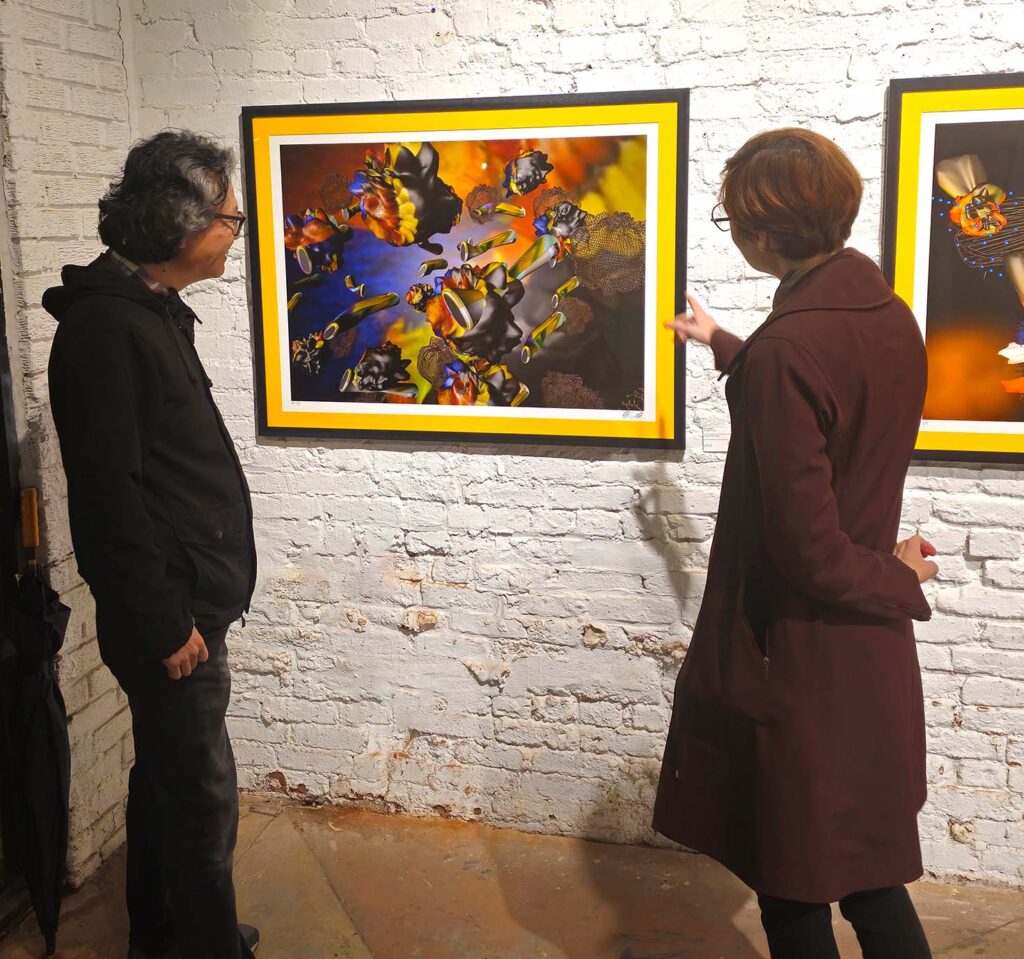
As such these shapes; they become a layered, semi-living 3D world structured on this translated data that echo the language of molecules—communicating meaning through the interplay of light, shadow, and structure, much like nature’s molecular systems do. Colorful elements showing intercommunication between elements are very much a part of the aesthetic of these works.

In Organic Murmuration’s, the digital data creations ripple and flow like flocks of starlings, colonies of bacteria, or mycelial webs, except here the murmurations are data—and serve to remind us that the tiniest molecular interactions that cause he color on a feather or antennae on an insect can shape entire ecosystems—and with Organic Murmuration’s a works of art.
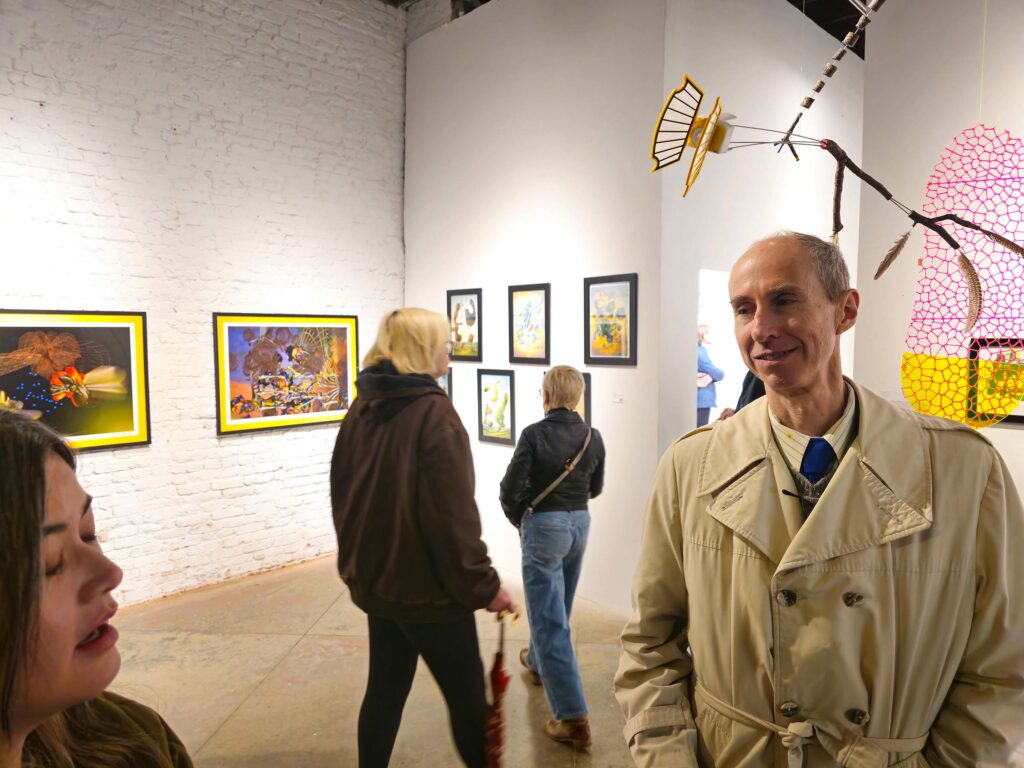
By fusing the science of molecular languages with artistic expression, I am exploring how the hidden codes of life can be decoded, reimagined, and shared bridging the tiny and the monumental. As we enter the realm of nanotechnology, where machines operate at the scale of single molecules, understanding these ancient molecular languages becomes increasingly vital.

Many researchers believe that to craft sophisticated, functional artificial nano systems; we must first decode and reprogram the same chemical conversations that nature has perfected over eons.
This recent research highlights two primary “molecular languages.” The first, known as allostery, acts like a precise lock and key, where one molecule binding to another changes its shape, thereby activating or deactivating vital functions. This is how countless enzymes and proteins in our bodies recognize when to initiate or terminate their tasks.
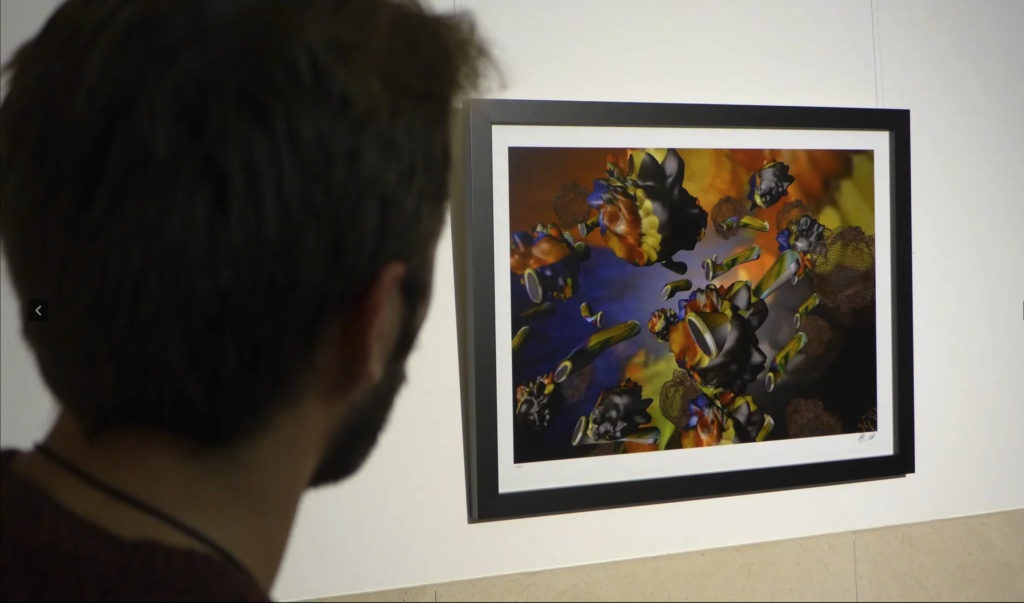
The second, called multivalency (or the chelate effect), resembles solving an intricate puzzle: when one molecule attaches to another, it creates multiple “connection points,” making it easier or harder for a third molecule to join the interaction. This multi-part binding weaves layers of control into the conversation, enhancing or diminishing the molecular signal. Until now, scientists have struggled to compare or merge these two mechanisms within a single system.
Vallée-Bélisle’s team, cracked this puzzle by designing programmable systems using DNA—a material often favored by bioengineers.Lauzon says, “DNA is like LEGO bricks for nanoengineers—simple, flexible, and entirely programmable.”
Their experiments demonstrate that mathematical equations could describe how these molecular languages function, unlocking design rules for building new molecular devices.

For example, by harnessing multivalency, they fine-tuned how cooperative or sensitive a molecule’s response could be while allostery governed its core activation. With these insights, they engineered a DNA-based sensor capable of detecting antibodies at different concentrations—a groundbreaking tool for monitoring immunity during pandemics.
Beyond the lab, this discovery offers a perspective on why nature sometimes selects one molecular language over another. Some nano systems thrive on the nuanced control of multivalency; others rely on the straightforward elegance of allostery.
The implications stretch beyond molecular biology—hinting at a future where art and science converge to better illuminate life’s profound intricacies, as with the Organic Murmuration working to transform hidden codes into immersive, living digital artworks.



Special Thanks:
Joao Prates and Galeria Antonio Prates at the The Centro Portuguese Serigrafia for printing these works. Edition of 3 each.
Exhibitions
RASQUACHE RESIDENCY Cholula, Puebla MEXICO, July 2016
Maria Rodriguez-Winter invited the exhibition of new drawing robots, and Organic Murmurations (formerly Cholula Murmurations) and vertical light architecture in association with the Sofia Quintero Art and Cultural Center and Rasquache Director Federico Cuatlacuatl.
MUSEAU MUNICIPAL DE PENAFIEL Penafiel, Portugal, Nov -Dec 2016
Organic Murmurations curated by Maria Manuela Lopes
934 GALLERY Columbus, Ohio, Nov 21- Dec 13, 2025
Synthetic Evolution, Artificial Intelligence and Art and SIGNS. Invited by Gallery Staff.
SP/N GALLERY Dallas, Texas, Feb 7-Apr, 2026
Organic Worlds: Symbiogenesis in Art presents the World wide premiere of Symbiogenesis, and Anicca Antennae-Soil as Brain; robotic beings, as avatars to insects, soil and bacteria as well as The Evolution of Information IS Life, Organic Murmuration, one from the SIGNS series, Synthetic Evolution, Sacs Membranes, Motors and Vessicles, The Farm Fountain video and 3-Story Robots animation. Two person exhibition with Amy Youngs. Invited by Professor Dr Charissa Terranova.
Through this work, I invite viewers to sense the invisible murmurs that animate all living systems—and to imagine how, like these tiny molecular messages, art too can ripple outward to shape the living world.

